Affiliate disclosure: This post may contain affiliate links. Please see our Privacy Policy.
Growing hops is a natural next step for homebrewers who want a truly homemade pint—from soil to stein. We started with just a few rhizomes tucked into a sunny garden bed, and now each harvest adds a homegrown punch to our farmhouse ales. Plus, hops have plenty of uses beyond beer, from herbal sleep aids to soothing teas.
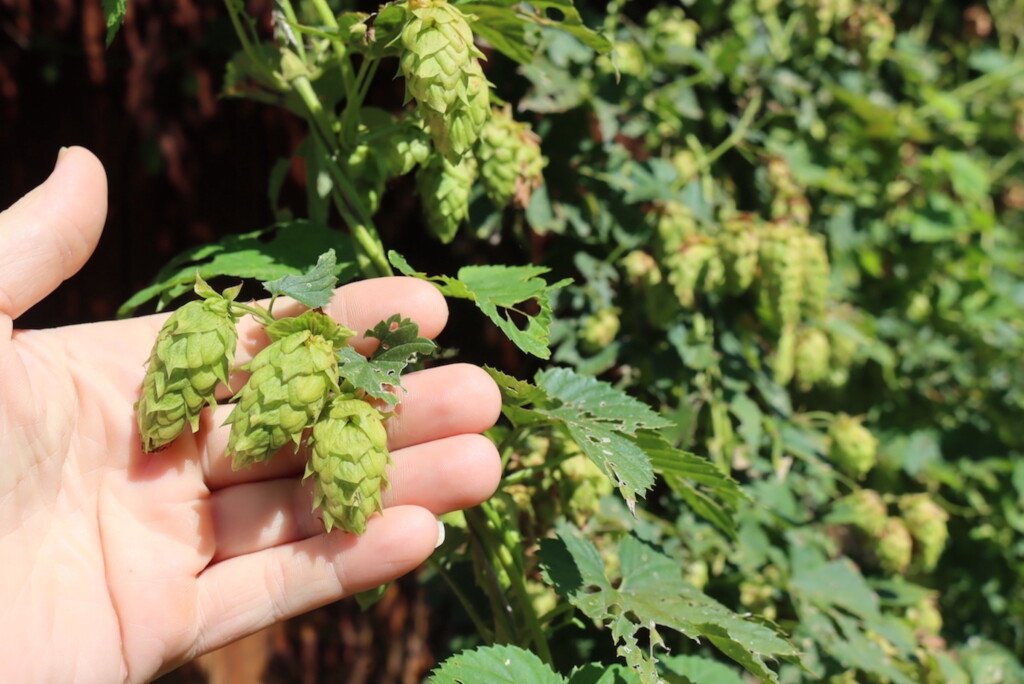
If you homebrew your own beer, it doesn’t take long before you start dreaming about taking things a step further. We’ve brewed plenty of batches with commercial hops, but there’s something incredibly satisfying about sipping a pint and knowing that every part of it came from your own homestead.
Growing hops is the next step in that journey—and it’s a lot easier than malting grains for all grain beer and homegrown yeast cultures. And once you realize just how easy hops are to grow (and how beautiful the plants are), it’s hard not to make space for them.
We started looking into growing hops a few years ago when we realized our farmhouse ales could be a lot more farmhouse. They’re vigorous, hardy perennials that don’t need much once established—just a bit of training and a sunny spot. Plus, the uses go far beyond beer, with traditional herbal applications for everything from sleep to stress.
(And yes, you can brew beer without hops, but our favorites are those classic IPAs!)
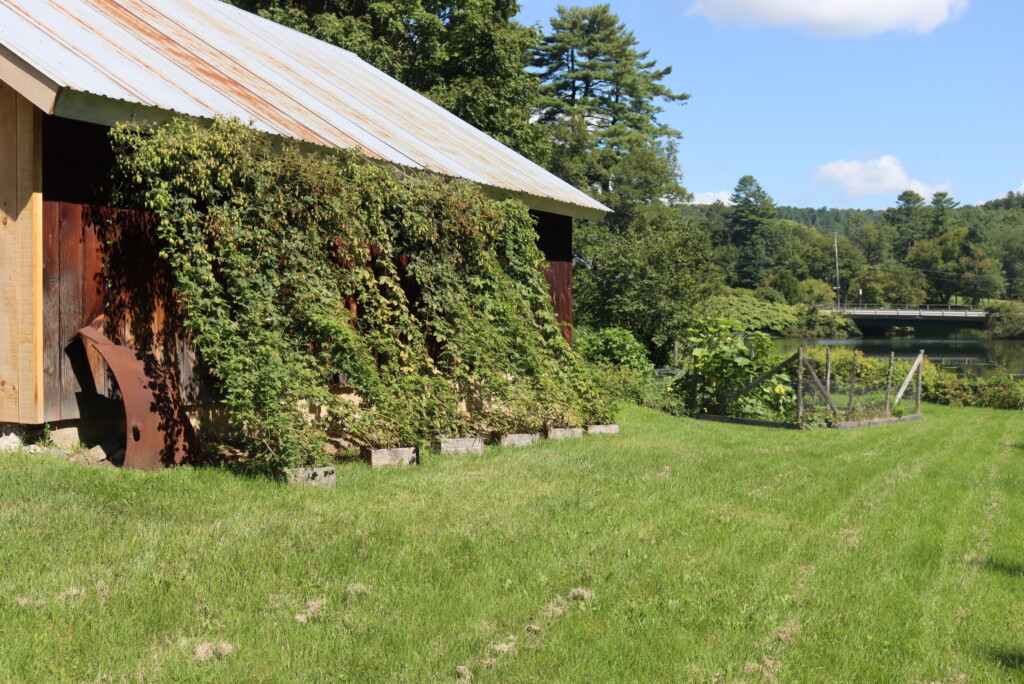
Growing Conditions for Hops
Hops (Humulus lupulus) are hardy perennials that grow from a rootstock called a rhizome. They thrive in USDA zones 4 through 8 and prefer full sun, rich soil, and plenty of vertical space. Seriously—these things climb. Vines (technically bines) can reach 15 to 25 feet in a single season, so you’ll want to give them a sturdy trellis, tall fence, or even a hop pole.
They prefer well-drained soil with a neutral pH and good organic matter. We amended our beds with composted manure before planting, and they’ve been thriving ever since.
Hops are dioecious, which means there are male and female plants. You only want females for beer brewing, since they produce the resinous, aromatic cones. Commercial growers propagate from female rhizomes to keep things consistent—home gardeners should do the same.
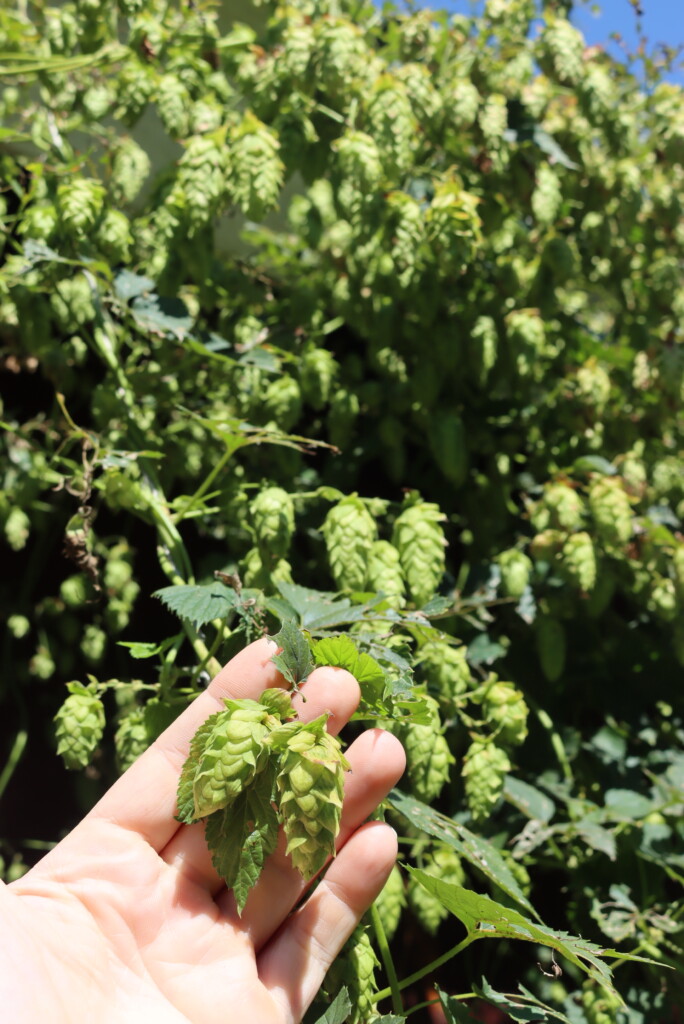
Best Hop Varieties for Homebrewing
There are dozens of hop varieties out there, and your choice really depends on your brewing style. Here are a few good options for homegrown brewing:
- Cascade – A classic American hop with floral, citrusy notes. Great for IPAs and pale ales.
- Centennial – Similar to Cascade but with more bitterness and a stronger aroma.
- Willamette – Mild and earthy, good for darker beers and English-style ales.
- Hallertau – A German noble hop, ideal for lagers and traditional European brews.
- Fuggle – A good choice for British-style bitters and porters, with a woodsy, herbal note.
We planted Cascade and Willamette to start, and both have done really well here in Vermont. Cascade especially is a reliable producer, and it adds that unmistakable grapefruit-citrus punch to our homebrews.
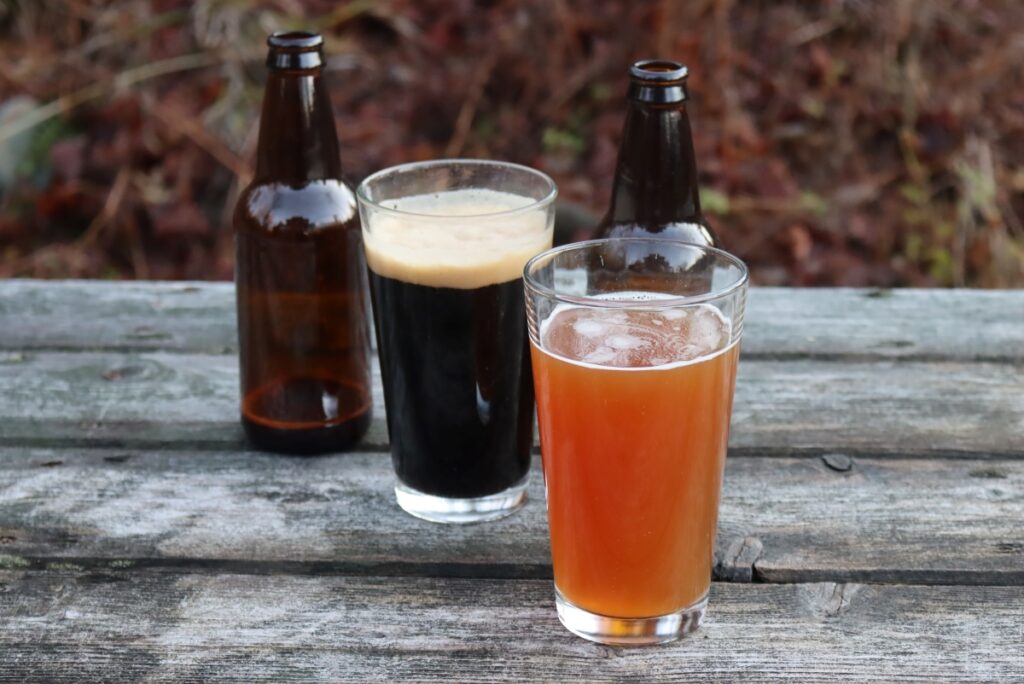
How to Plant and Train Hops
Hops are typically planted in early spring, after the last frost. You’ll start with a rhizome—essentially a piece of rootstock—and bury it horizontally about 2 inches deep. Keep them spaced 3 to 5 feet apart, and plan for vertical growth.
Once they get going, they’ll send up multiple shoots. Choose the 2–3 strongest and train them to climb, removing the others to conserve energy. We use twine anchored from the top of a pole or building down to the base of the plant, which the bines will spiral up as they grow.
Regular watering during the first year helps them get established, but once mature, hops are fairly drought-tolerant. Mulching helps keep the weeds down and moisture in, and a bit of compost each spring keeps the vines healthy.
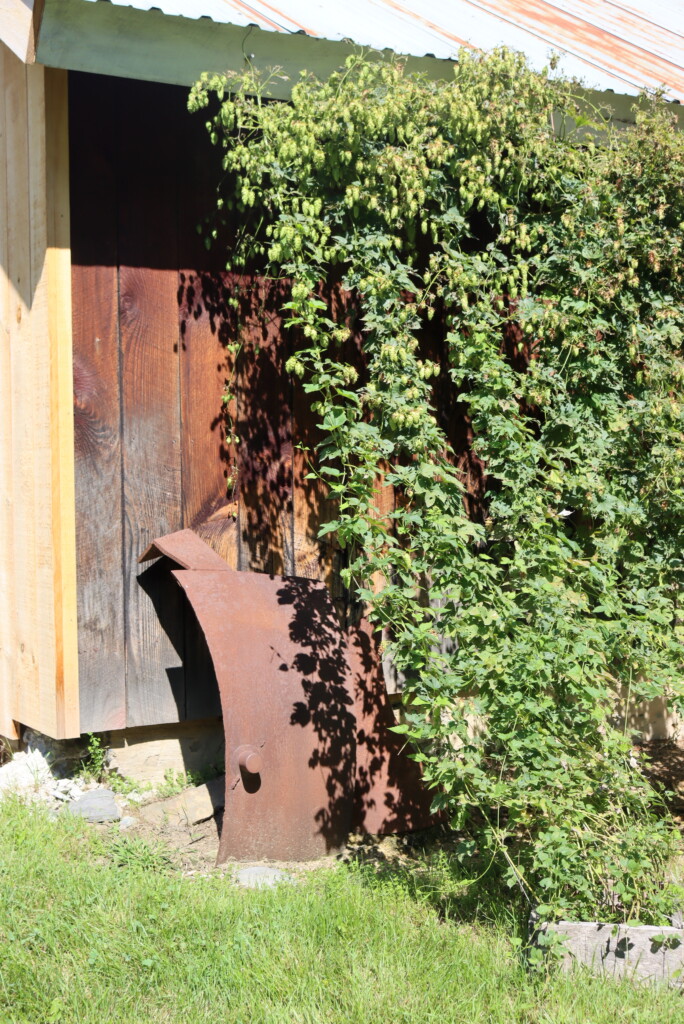
Harvesting and Drying Homegrown Hops
Harvesting hops is more about timing than technique. You’ll know the cones are ready when they feel papery and dry, spring back after a squeeze, and leave a yellow resin on your fingers. That resin—lupulin—is where all the aroma and bittering magic lives.
Here in Vermont, we usually harvest in late August to early September. You can pick cones by hand or cut down the whole bine if you’re harvesting at scale. Just be careful—those vines are scratchy, and gloves are a good idea.
Since hops don’t last long on the vine after they’re ready, and the plants die back to the ground every winter anyway, we harvest them by cutting their supports and brining the whole plant down.
It’s much easier to pick over the plants and harvest the cones by hand when they’re laid out on a tarp.
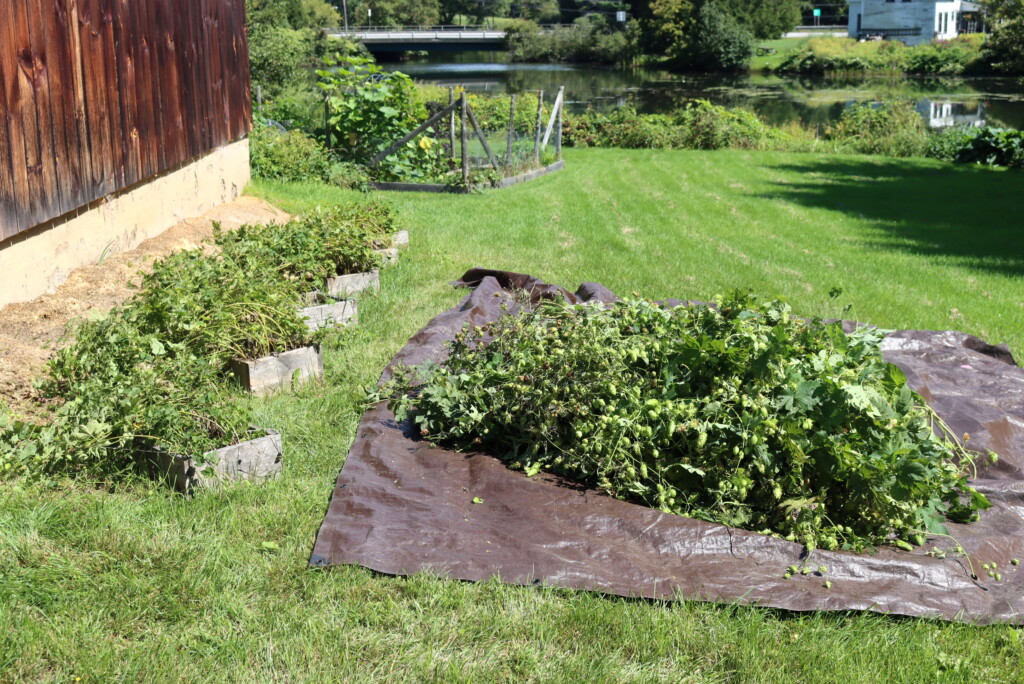
After harvest, hops need to be dried before storage. We spread ours out in a single layer on screens in a warm, well-ventilated spot. A dehydrator set to 95–105°F also works well. Once they’re dry and snap when crushed, they’re ready to store.
How to Store Hops
To preserve aroma and bitterness, hops should be stored cold and away from air and light. Vacuum sealing is ideal, but at minimum, use a zipper bag with as much air removed as possible. Toss them in the freezer, and they’ll keep for up to a year.
We freeze our hops in small batches, just enough for a brew day. That way we can grab what we need without thawing the whole harvest.
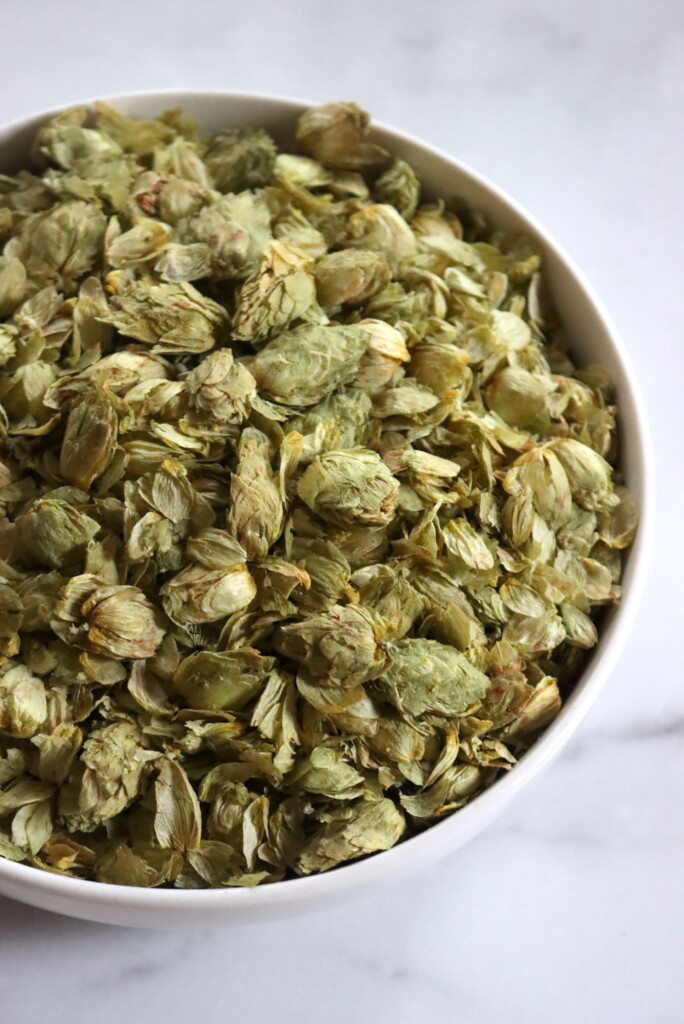
Uses for Hops Beyond Beer
While hops are best known for beer, they’re also a time-tested herbal remedy. Traditionally, hops have been used to promote sleep, calm the nerves, and ease digestion. Here are a few ways we use them around the homestead:
- Sleep sachets – Dried hop cones tucked into a pillow can help promote restful sleep. We often combine them with lavender or chamomile.
- Herbal tea – Hops tea is quite bitter on its own, but blended with mint or lemon balm, it makes a relaxing evening brew.
- Hops tincture – A few drops of hops tincture before bed can help with restlessness or stress.
- Salves and oils – Infuse dried hops in oil to use in calming salves or muscle rubs. The bitter compounds have mild anti-inflammatory properties.
If you’ve ever brewed beer, you already know how fragrant hops are. That same scent makes them a favorite in herbal blends for sleep, stress, and relaxation.
Growing hops isn’t just about brewing beer (though that’s certainly the fun part). These vigorous perennials are beautiful in the garden, useful in the apothecary, and incredibly rewarding to grow. Whether you’re after a fully homegrown brew or just looking for a new plant to trellis, hops are well worth the effort.
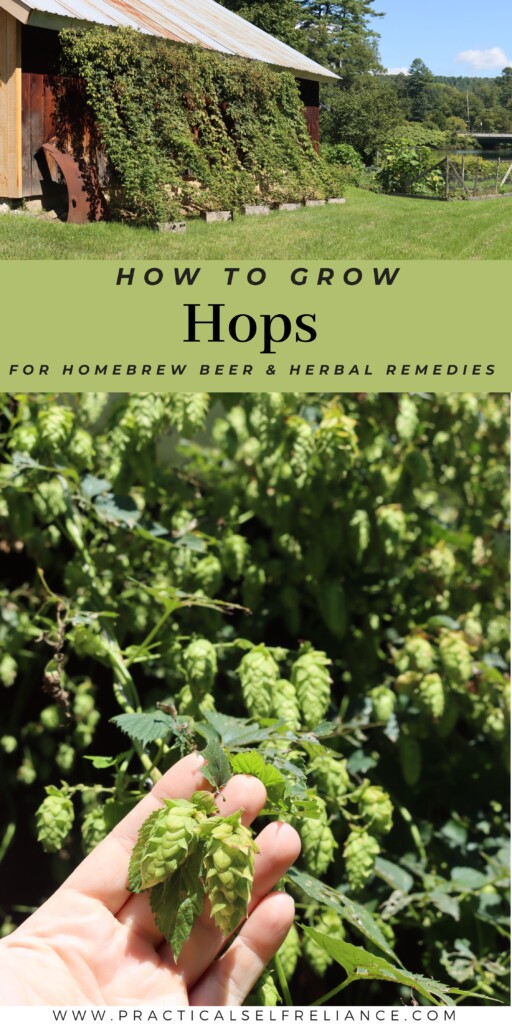
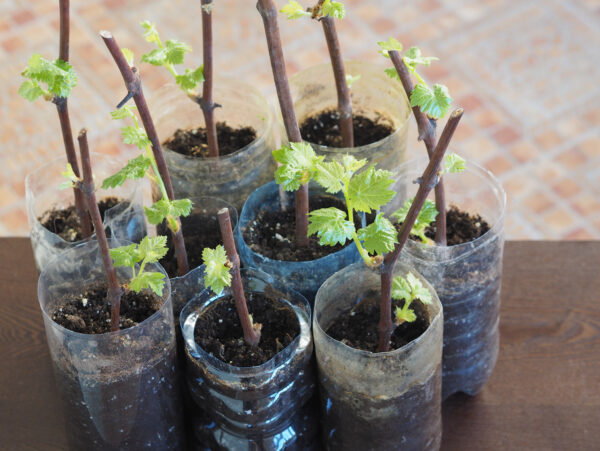
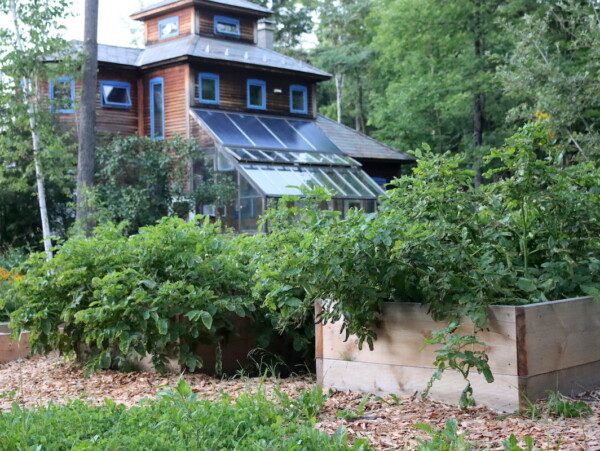
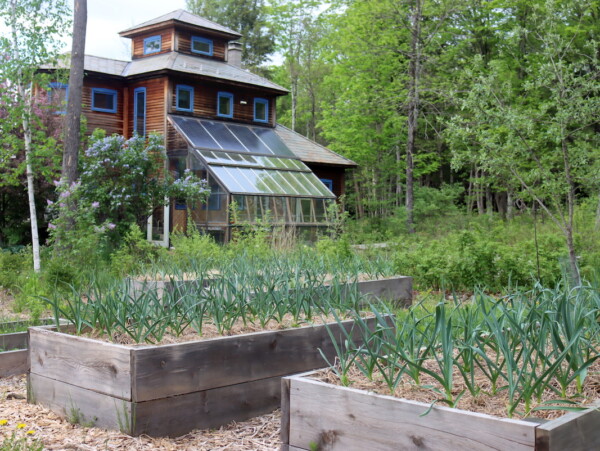
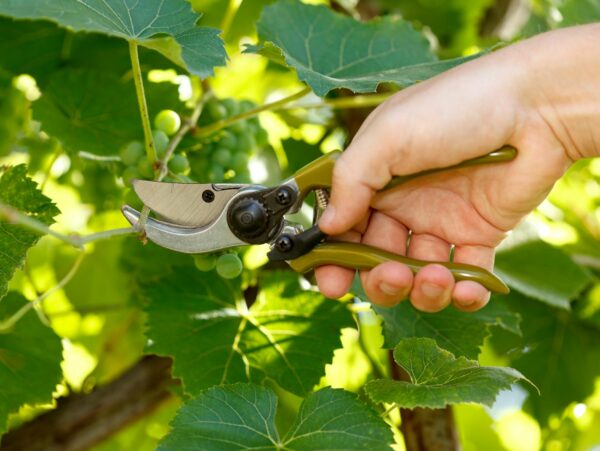
I have used hop leaves like grape leaves for dolmas successfully. if you want the flavor of trad dolmas, pickle them with some hot salty vinegar over them first.
I also eat the young tender shoots in spring.
I knew that the shoots are edible, but I never would have thought of using the leaves for dolmas. That’s such a great idea! Thank you!